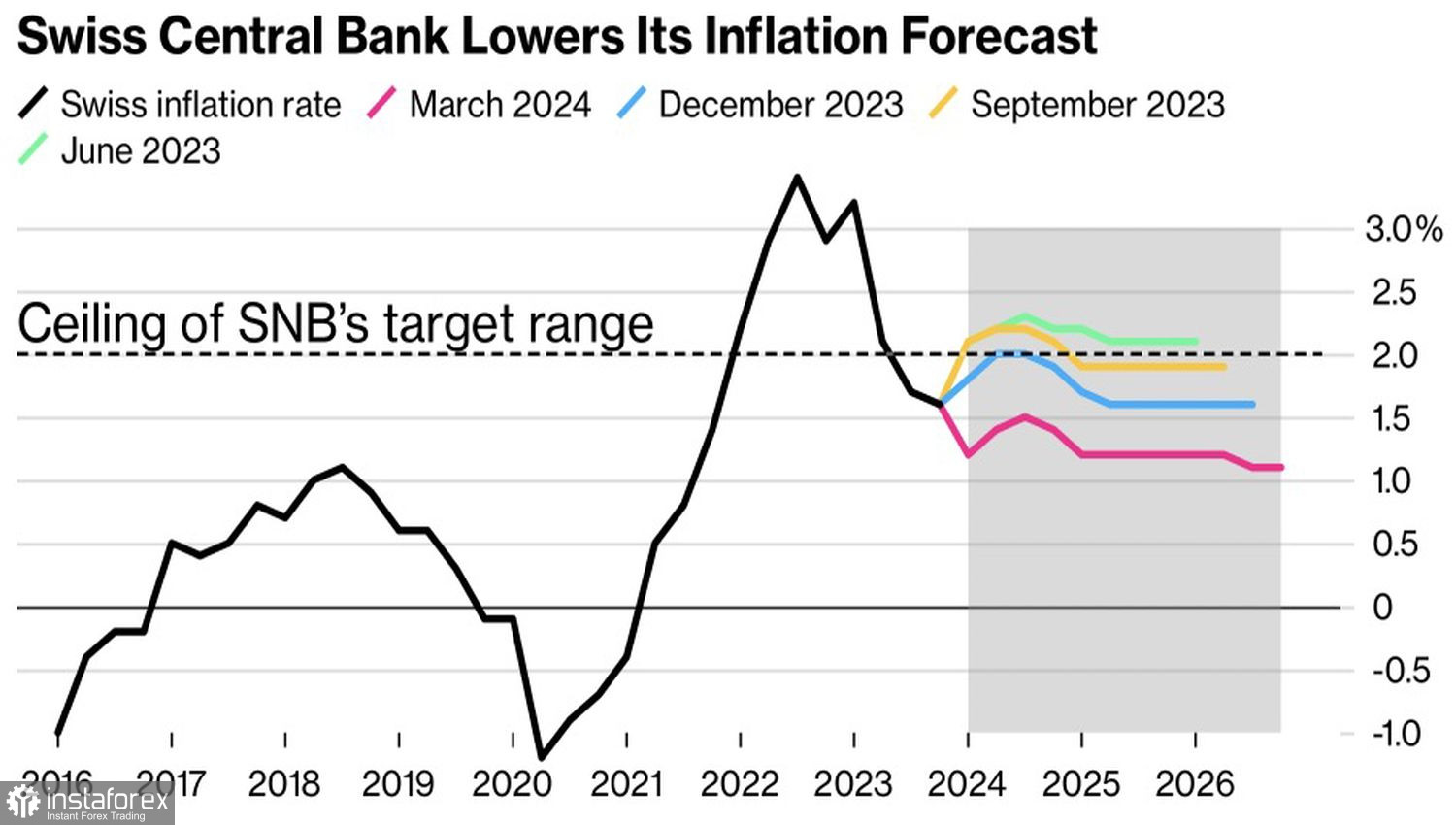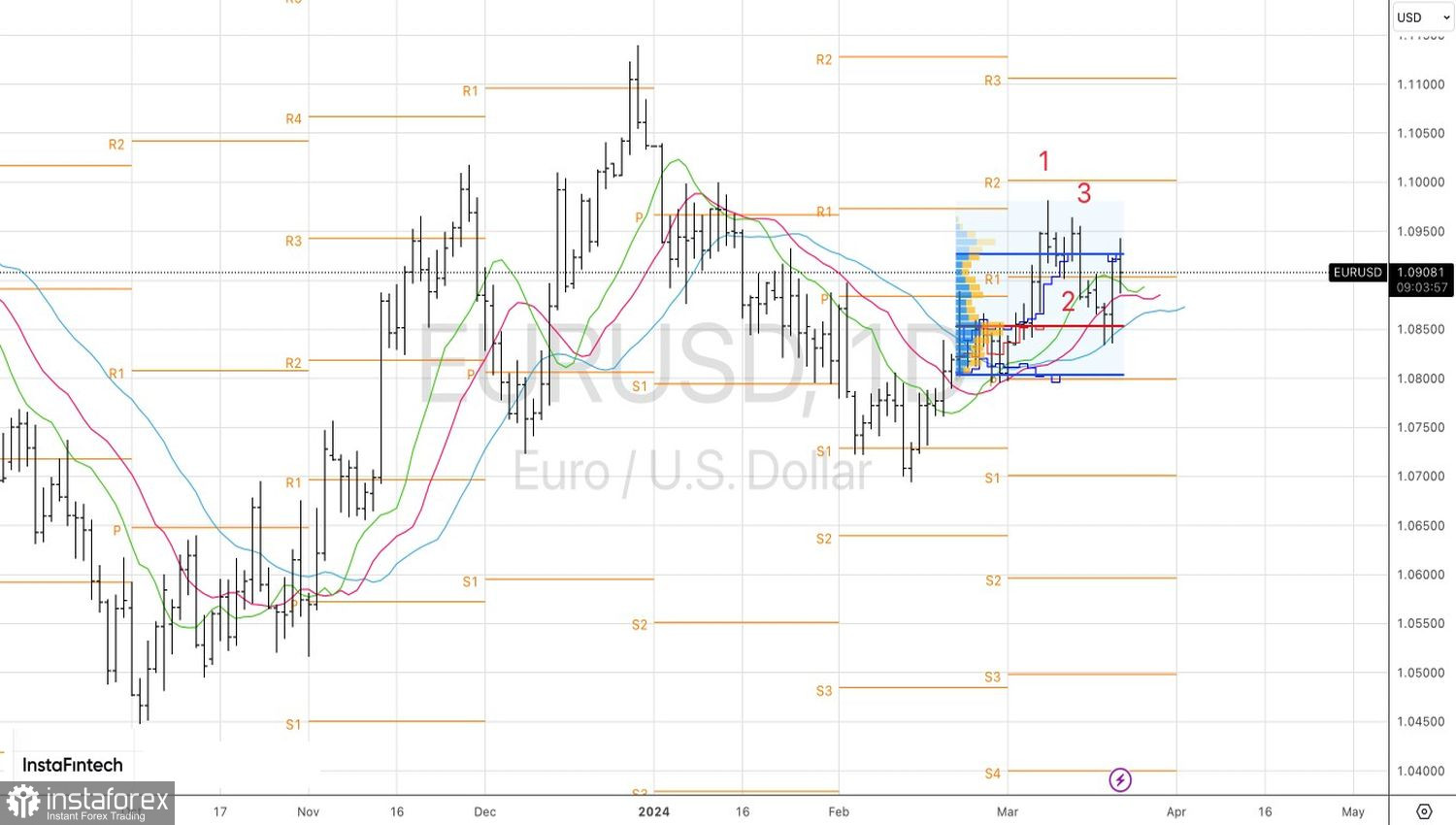The boldness of cities is taking over. But sometimes boldness ends in defeat. When most central banks carefully monitor signals from the Fed and hesitate to take the first step, Japan and Switzerland surprised. The Bank of Japan raises the overnight rate for the first time since 2007, and the Swiss National Bank becomes the first in the monetary expansion cycle. As a result, both the yen and the franc are heading downwards. Moreover, the collapse of the Swiss currency halted the advance of the "bulls" on the EUR/USD, reminding them of the problems facing the European economies.
It seems the era of reverse currency wars is ending along with the restoration of supply chains. If in 2023, thanks to interventions by the National Bank, the Swiss franc became the best performer among G10 currencies, in 2024, the SNB decided to sink it. It became the first among leading central banks worldwide to cut the rate from 1.75% to 1.50% and CPI forecasts. The policy of "strengthen your currency, stop high inflation" is a thing of the past. Devaluation is back in vogue.
Dynamics and Inflation Forecasts in Switzerland

There's no need to be surprised by this. Export-oriented Europe faced problems due to supply shocks. However, as the economies of trading partners in the euro area recover, they require weaker currencies to sell more goods abroad. Switzerland was the first to feel this. I wouldn't be surprised if the eurozone follows suit.
The problem is not only with exports. The economy of the currency bloc is weak and cannot sustain a deposit rate of 4% for an extended period. No matter how much the region may slip into deflation, a problem it had been battling for years. Until Christine Lagarde and her colleagues hurry to loosen monetary policy, carefully monitoring the Fed's movements. However, they will soon realize that currency wars are making a comeback.
As for the Federal Reserve, it is not yet intending to change its stance. Despite a stronger economy and unexpected inflation acceleration in January–February, FOMC rate forecasts remain unchanged—the central bank expects three cuts in 2024. Together with Powell's statement that the deflation story remains the same, this contributed to a rally in risky assets. Conversely, the U.S. dollar came under pressure as a safe-haven currency.
FOMC Rate Forecasts


In my opinion, it is wrong to underestimate the risks of a resurgence of inflation in a strong economy. Yes, previously, price increases were due to supply shocks, but now demand is also at play. And in the U.S., it is higher than in the eurozone or Switzerland. Consequently, the likelihood of new peaks in CPI and PCE is higher. As a result, the Fed may cut rates less than it predicts, which will benefit the U.S. dollar.
Technically, on the daily chart of EUR/USD, the "bears" are playing out the 20-80 strategy, pushing quotes below the high of the wide-range bar. The further fate of the pair will depend on the sellers' ability to keep it below the pivot level of 1.0905. If they succeed, storming dynamic supports in the form of moving averages will allow shorts to be formed.
 English
English 
 Русский
Русский Bahasa Indonesia
Bahasa Indonesia Bahasa Malay
Bahasa Malay ไทย
ไทย Español
Español Deutsch
Deutsch Български
Български Français
Français Tiếng Việt
Tiếng Việt 中文
中文 বাংলা
বাংলা हिन्दी
हिन्दी Čeština
Čeština Українська
Українська Română
Română

